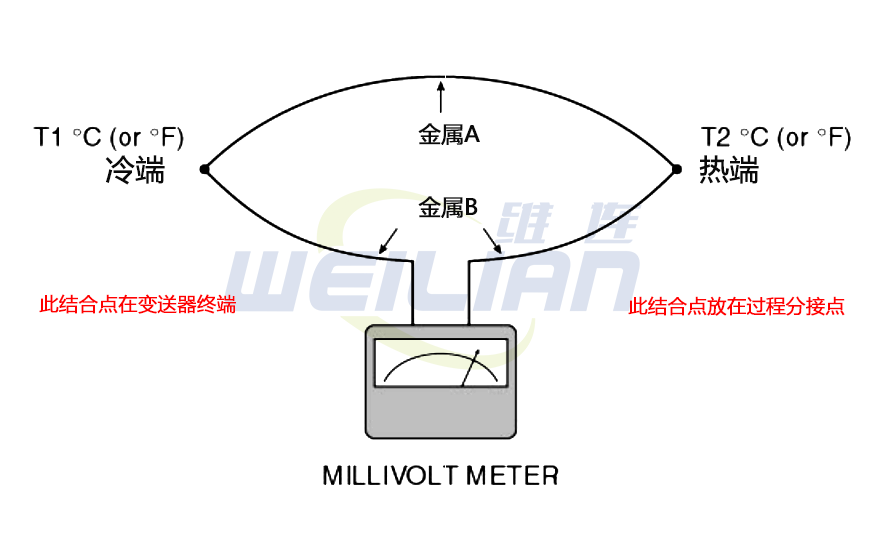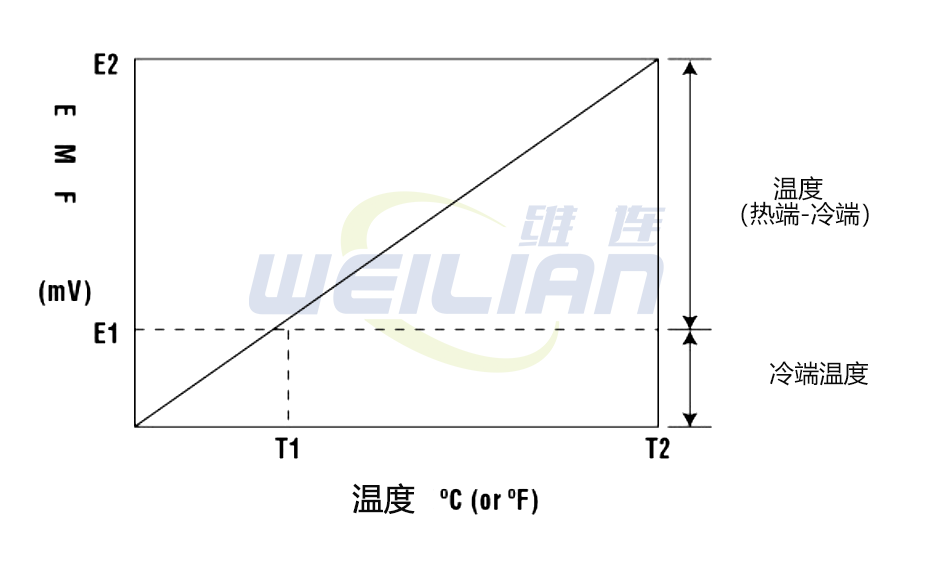
Thermocouple cold terminal compensation
For the thermocouple, the temperature should be measured at a cold end of 0 ° C or 32 ° F (on the side of the thermocouple end, that is, the transmitter).
This means that we must keep 0 ° C or 32 ° F at the temperature transmitter terminal, which is actually impossible. Therefore, compensation needs to be performed with the temperature readings measured by correction.
Cold -end compensation
When the terminal is connected to the device such as the thermocouple or its extension line to the thermocouple transmitter, the cold end is at room temperature T1 ° C.
If the temperature of the thermal end and the cold end is higher than 0 ° C, the electromotive force received by the device is lower than the electromotive force when the cold end temperature is 0 ° C.
In order to accurately measure the temperature, we need to add the electric momentum corresponding to the T1 to the measured electric momentum. Adding this electric momentum is called cold compensation.

These graphs show the temperature -electric potential curve (not proportional) and temperature measurement settings with the thermocouple and the hecy meter. Assuming that the cold and thermal end are in T1 ° C and T2 ° C, respectively.
According to the standard temperature-electric momentum, the thermocouple generates E1 MV at the temperature T1, and the E2 MV is generated at T2. The millival receiving potential difference, E2 -E1 corresponds to T2 -T1.
In order to obtain T2, we need to add E1 and E2-E1 to E1 on the potential difference.

A practical example may better clarify the above discussion. Suppose we use the E -type thermocouple to measure T2 (such as process temperature), that is, 550 ° C (1022 ° F). Now another thermocouple tie T1 says it terminated at the temperature transmitter or control room, and the T1 temperature is at room temperature, that is, 25 ° C (77 ° F)
According to the Type E-type temperature-electric potential table, thermocouple is generated (based on ° C):
The process temperature (T2) is 550 ° C, so according to the type E -type thermal power puppet table or measurement voltage: 41.045 MV AT 550 ° C
Now the room temperature (T1) is 25 ° C, so it is 1.495 MV at 25 ° C according to the heating puppet table or measurement voltage of the E or measuring voltage.
The potential difference is 39.550 MV.
The thermoelectric puppet temperature transmitter shows that the temperature value of 39.55 millions is equivalent to 531.5 ° C. However, the actual process temperature is 550 ° C, so there is an error of 18.5 ° C (error = 550-531.5).
The temperature error will use cold -end compensation technology for compensation.
In the cold terminal compensation, we placed a temperature sensor near the temperature transmitter terminal (if the thermocouple is connected at the field) or the control room terminal (if the thermocouple is connected at the control room), and then the temperature sensor measures the T1 value of the T1 value of the temperature of the temperature sensor. For example, 1.495 MV @ 25 ℃.
Now the millivoltory of this measurement will be added to the measuring potential difference, that is, 39.55 MV, so 39.55mv + 1.495mv = 41.045 mv, so the temperature transmitter shows the compensation correction temperature reading.

